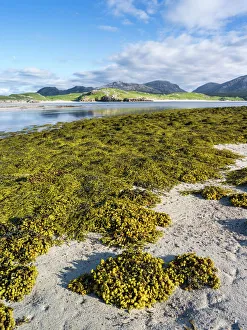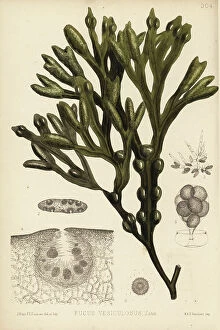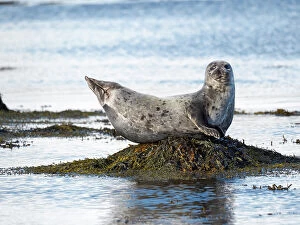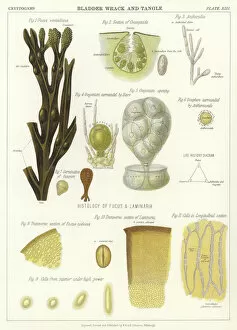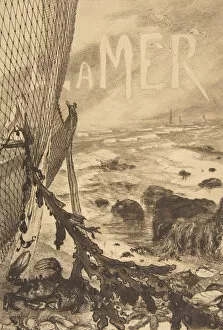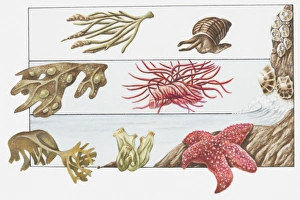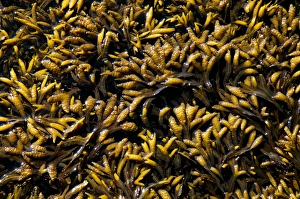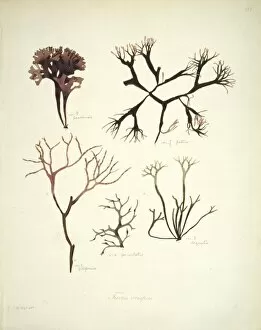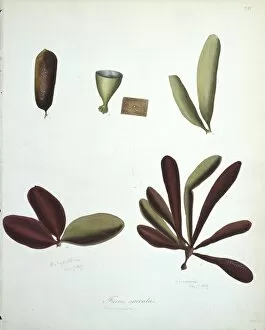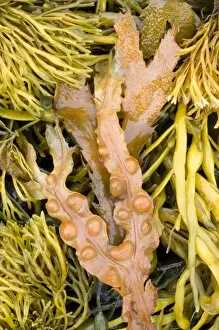Bladder Wrack Collection
Bladder wrack, scientifically known as Fucus vesiculosus, is a fascinating seaweed that can be found in various coastal regions around the world
All Professionally Made to Order for Quick Shipping
Bladder wrack, scientifically known as Fucus vesiculosus, is a fascinating seaweed that can be found in various coastal regions around the world. One such place where this unique plant thrives is the Isle of Lewis, which forms part of the beautiful island Lewis and Harris in the Outer Hebrides of Scotland. The beauty and diversity have been captured in stunning illustrations throughout history. In one particular lithograph titled "Bladder Wrack and Tangle, " created by La Mer between 1850-1914, its intricate details are brought to life with vibrant colors. This seaweed's versatility extends beyond artistic representation; it has also been used for centuries due to its medicinal properties. Bladder wrack has earned several common names including black tang and rockweed, reflecting its dark appearance and tendency to cling onto rocks along shorelines. From Den Helder in Noord-Holland, The Netherlands to Northumberland, England they can be found thriving in diverse environments across Europe. Its adaptability is further highlighted through an X-ray image showcasing its internal structure - a testament to nature's ingenuity. Elizabeth Twining's watercolor paintings beautifully capture the essence of plants like bladder wrack. Her botanical illustrations showcase their delicate features while highlighting their importance within ecosystems. Speaking of ecosystems, beneath beach surfaces lie a myriad of creatures coexisting harmoniously with bladder wrack. Channelled wracks, rough periwinkles, acorn barnacles - all find refuge amidst this seaweed alongside beadlet anemones and oarweeds creating a vibrant underwater community worth exploring. Beyond Europe's shores lies Vancouver Island on Canada's west coast where another species called Fucus gardneri or rockweed thrives alongside our beloved bladder wrack. This region boasts breathtaking landscapes where these seaweeds intertwine with sandstone patterns underfoot while Western sandpipers gracefully roam nearby at Stanley Park.

